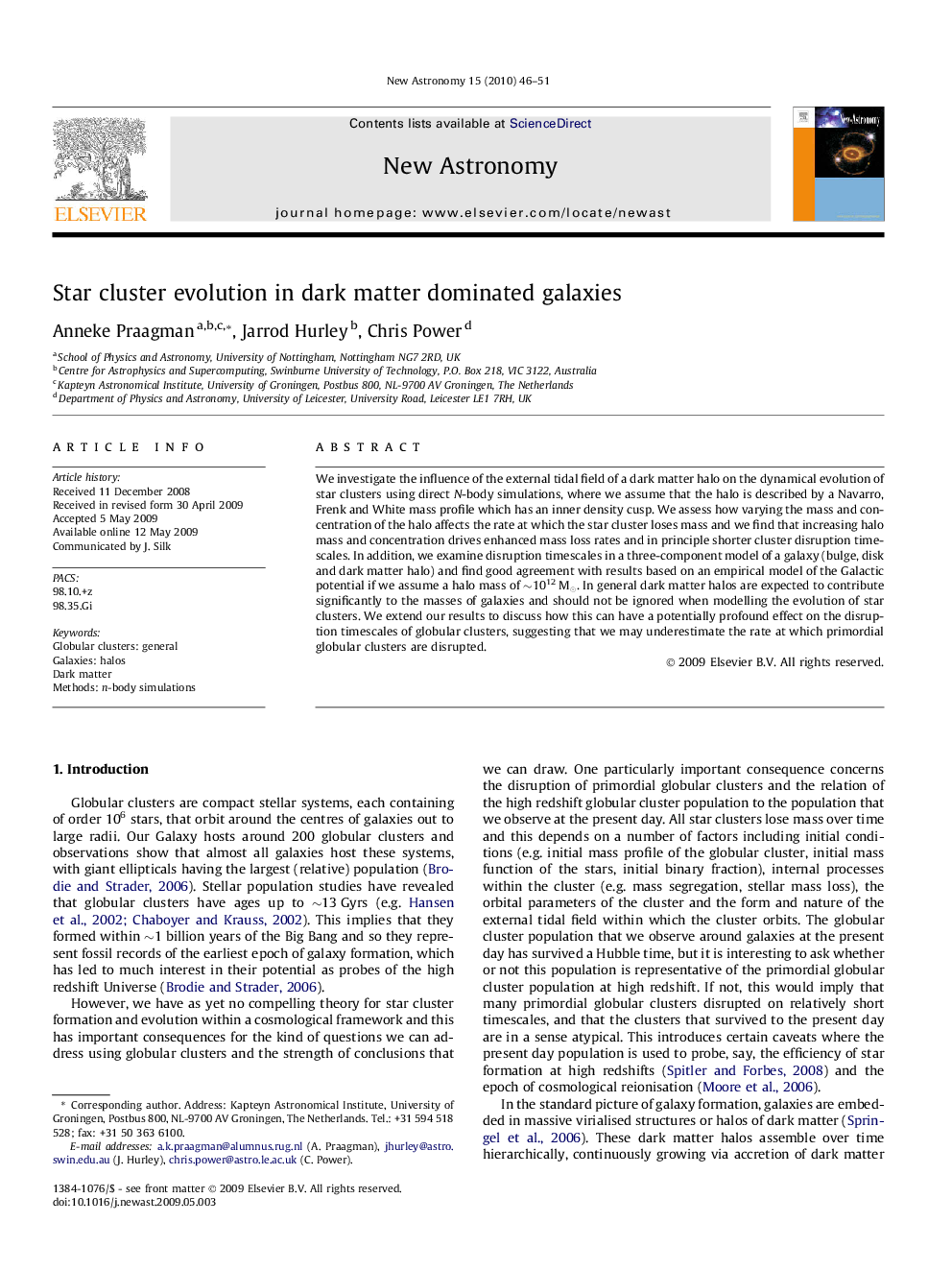| Article ID | Journal | Published Year | Pages | File Type |
|---|---|---|---|---|
| 1779480 | New Astronomy | 2010 | 6 Pages |
We investigate the influence of the external tidal field of a dark matter halo on the dynamical evolution of star clusters using direct N-body simulations, where we assume that the halo is described by a Navarro, Frenk and White mass profile which has an inner density cusp. We assess how varying the mass and concentration of the halo affects the rate at which the star cluster loses mass and we find that increasing halo mass and concentration drives enhanced mass loss rates and in principle shorter cluster disruption timescales. In addition, we examine disruption timescales in a three-component model of a galaxy (bulge, disk and dark matter halo) and find good agreement with results based on an empirical model of the Galactic potential if we assume a halo mass of ∼1012 M⊙M⊙. In general dark matter halos are expected to contribute significantly to the masses of galaxies and should not be ignored when modelling the evolution of star clusters. We extend our results to discuss how this can have a potentially profound effect on the disruption timescales of globular clusters, suggesting that we may underestimate the rate at which primordial globular clusters are disrupted.
